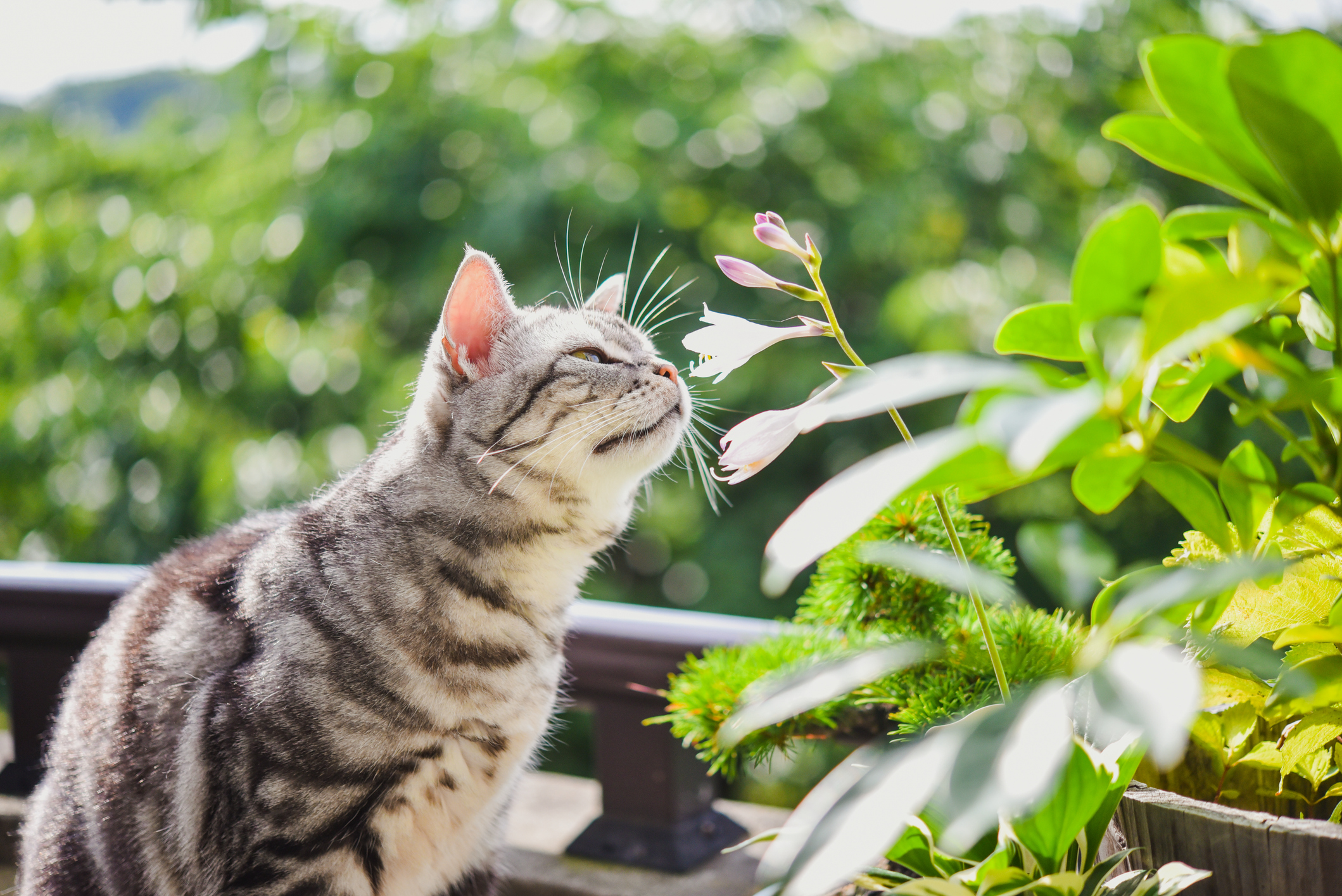Cats have a curious nature and may find themselves nibbling on harmful items such as lily flowers, chocolate, rat bait, or human medications. When a toxin or foreign body is consumed, it could necessitate a costly (and stressful) vet visit for a physical examination and may possibly require surgery.
PetSure data indicates that the average treatment costs for cats ingesting toxins and foreign bodies over the past 12 months were:
| Cost Type | Amount* |
|---|---|
| Average treatment cost (without surgery) | $1,808 |
| Average treatment cost (with surgery) | $4,951 |
| Highest treatment cost | $19,444 |
Common household hazards for cats
Lilies
According to PetSure claims data, the number one toxin ingested by cats was lilies. Lily toxicity in cats can occur through exposure to Lilium and Hemerocallis plant species, including true lilies, daylilies and hybrids. Common symptoms of lily ingestion range from a sudden disinterest in food, vomiting, lethargy or drooling, to excessive drinking or urination, crying, and generalised weakness. Seizures may also occur as a result of kidney injury or failure.
Immediate treatment is critical upon the suspicion of lily exposure as it typically involves hospitalisation, as well as efforts to stop toxin absorption to prevent kidney injury and/or seizuring. If kidney damage is apparent, treatment may include managing symptoms through intravenous fluids and appropriate medications.
The average treatment for the ingestion of lilies was $1,845 with the highest claim being $22,423*.
Craft objects
Craft items such as string or ribbon were also identified as a common foreign body ingested by cats. Cats are often attracted to string-like objects due to their playful and curious nature, but it’s critical to keep these items out of their reach to prevent mishaps from occurring. Ingestion of these materials can pose serious dangers to cats as they can become entangled in their intestines, leading to blockages or even perforations, which can be life-threatening. The average treatment cost for ingestion of craft objects was $4,704* with the highest claim being $11,906*.
Chocolate
Cats are naturally attracted to the smell and texture of chocolate, but it contains theobromine and caffeine, both of which are toxic to them. Ingesting chocolate can lead to symptoms such as vomiting, diarrhoea, rapid breathing, increased heart rate, and even seizures or death. Treatment for chocolate ingestion in cats can be costly, with an average treatment cost of $598* and the highest treatment claim reaching $1,565* .
Rat bait
Rodenticides are poisonous substances, some of which are manufactured as anticoagulants, which interfere with blood clotting. When ingested by cats, rat bait can lead to internal bleeding, weakness, difficulty breathing, and even death if not treated promptly. Treatment for rat bait ingestion in cats can quickly add up, due to the need for emergency medical intervention, monitoring, and supportive care. The average treatment claim for this in 2023 was $1,253* with the highest treatment claim sitting at $12,900* .
Human medications
Cats are sensitive to many common human pain medications, such as ibuprofen and paracetamol. Ingesting these medications can cause kidney damage, liver failure, gastrointestinal ulcers, and other serious complications in cats. Treatment for accidental medicine consumption in cats had an average treatment claim of $1,863* with a maximum treatment claim of $6,271*.
Tips to prevent ingestion of dangerous items for cats
Cats sometimes eat house plants or flowers out of boredom, or because they are attracted to the leaves fluttering in air currents. PetSure Veterinary Advisors, Dr. Betty Chan and Dr. Kylie Mitchell offer tips to help minimise mishaps and foreign body ingestion:
Cat-proof your home: Clear countertops to keep hazardous items like flowers and human medications out of reach, confine your cat to safe areas in the home, and keep a watchful eye on them.
Supervised outdoor access: If you allow your cat outdoor access, supervise them closely to prevent encounters with toxic substances such as pest deterrents and hazardous plants. Create a cat-friendly outdoor space with secure fencing or enclosures to minimise the risk of exposure to outdoor threats.
Pet-safe pest control products: Opt for pet-safe pest control products, such as bait stations for rodents that are inaccessible to cats or insect traps that do not contain harmful chemicals. Consult with your veterinarian to ensure any products used in or around your home are safe for your cat.
Promote environmental enrichment: Ensure your cat is stimulated by providing sufficient entertainment and mental stimulation, to reduce the likelihood of them ingesting harmful objects due to boredom.
Regular veterinary check-ups: Schedule regular veterinary check-ups for your cat to monitor their health and address any concerns related to potential toxin exposure or ingestion.
Which cat breeds are most at risk?
The five cat breeds most at risk for ingesting foreign bodies or toxins^ are:
- Burmese
- Domestic Medium Hair
- Ragdoll
- British Short Hair
- Domestic Short Hair
*Based on PetSure claims data, 2023 calendar year.
^PetSure claims data for 2023, considering breeds with at least 2,000 pets.
Pet insurance can help by covering a portion of the eligible vet bill if the unexpected happens. Because it is difficult to predict the costs of veterinary care, it can help to have measures in place to help prepare for the unexpected. Check out our partner network and explore our policy tools to find a pet insurance policy.
Not all conditions or items are covered by Pet Insurance. Refer to the applicable Product Disclosure Statement for information about coverage and exclusions.



 Fact checked
Fact checked





